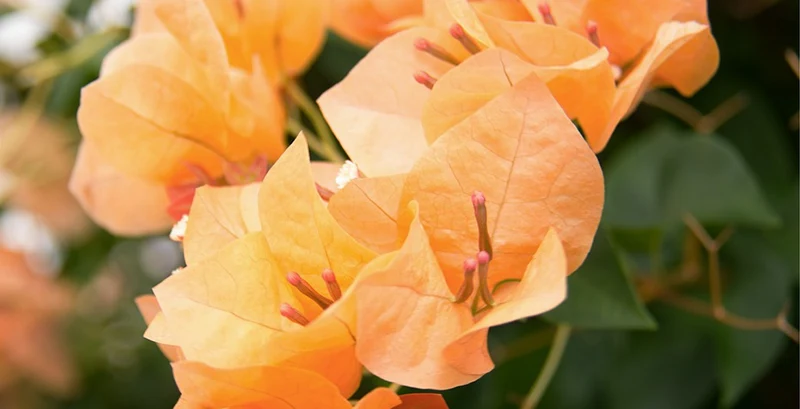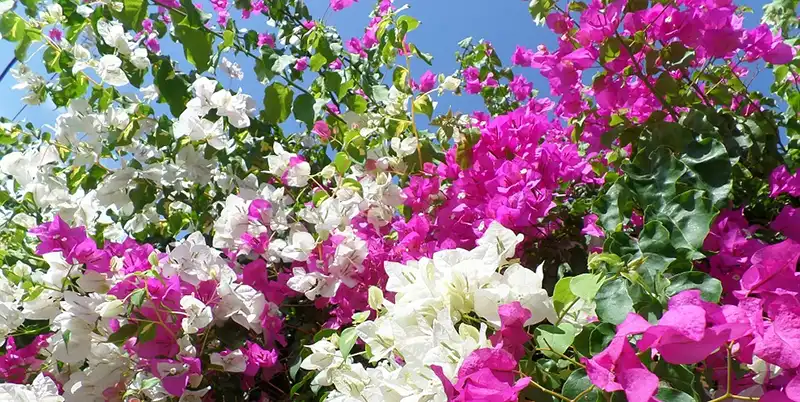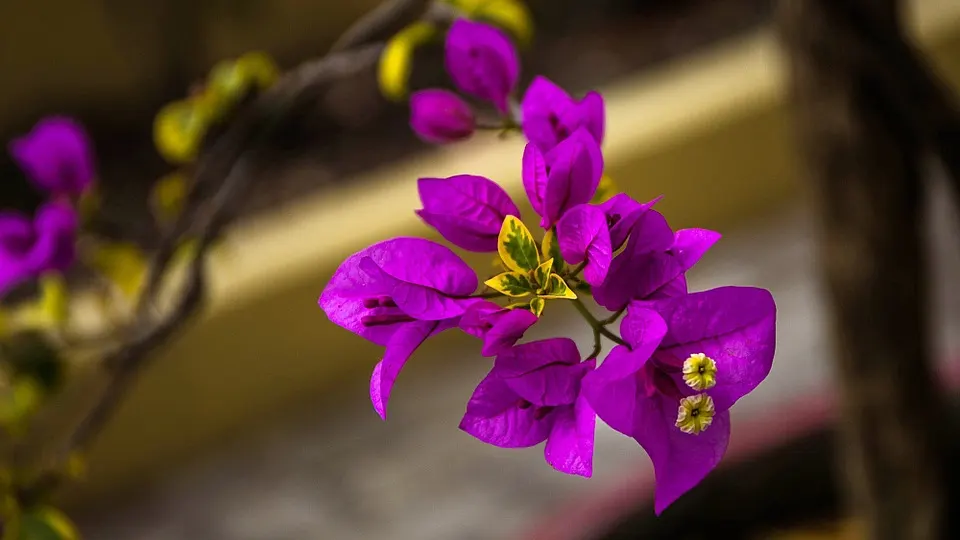Bougainvillea Fertilizer Guide
Bougainvilleas are one of the many wonders of the natural world. Bougainvilleas can grow as small shrubs, massive trees, climbers clinging to fences or making their way up the sides of buildings, or even miniature representations of the beauty of the natural world: bougainvillea bonsais.
Bougainvilleas are easy to grow from various cuttings and even seeds, but successfully germinating or propagating one is only a small step toward the beautifully vibrant and spectacularly colorful plants we all adore. To grow into a healthy adult plant, no matter how it grows, it will need organic substances that encourage flowering, robust root systems, and lush foliage. These components are all found inside specialized bougainvillea fertilizers.
What is Bougainvillea Fertilizer?
Fertilizer is a chemical compound fed to crops to increase their strength, production, and beauty. There are three essential compounds necessary for healthy bougainvillea growth and to produce the stunning structural bracts we love. These three compounds are nitrogen, phosphorous, and potassium. Adding these three nutrients to the soil is often required because plants, including bougainvillea, require inordinately large amounts of them.
Yes, plants have existed in their current form since before the age of man and the advent of such targeted approaches to plant health. But times have changed. Human industry and our incessant manipulation of the natural world have changed the composition of soils, the biological availability of truly fertile soils, and we don’t typically like waiting for grass to grow, so to speak. Fertilizer exists to satiate our need for faster-growing plants that are more resistant to critters and bad weather spells and increase flower and fruit production to make the plants more valuable and beautiful.
Nitrogen
Nitrogen is widely considered the most crucial component for supporting healthy plant growth. Found in fertile soils, nitrogen is the energy source plants need to maintain their own lifecycles. Nitrogen is also a part of the chlorophyll molecule, which gives plants their green color and facilitates the process of photosynthesis.
Photosynthesis is a natural process that green plants use to turn essential components like carbon dioxide and water into starches and sugars that the plant uses for growth. The leaves of the beautiful bougainvillea drink in the sunlight and manufacture all the nutrients they need to survive. Photosynthesis quite literally means ‘making things with light.’
A lack of nitrogen shows up as yellowing with the plant, a condition called chlorosis. Nitrogen favors younger growth over older parts of the plant, so if there is a nitrogen deficiency within your bougainvillea plant, any available nitrogen will be pushed into new growth, leaving the older growth starved of the essential nutrient.
Nitrogen is also one of the vital building blocks in plant protoplasm. This is the translucent matter that makes up the plant’s biological cells. Protoplasm is necessary for flower differentiation and increases the speed and voracity at which healthy plants grow. So if you look at the beautifully colored bracts and modest flowers of your bougainvillea, you’re seeing the effect of healthy protoplasm production. Protoplasm is also a catalyst for other minerals and processes within the plant.
NItrogen typically facilitates the healthy growth of green shrubbery. So if you want your bougainvillea to bush out with reckless abandon and aren’t too fussed about flower production, nitrogen is your very best friend in the garden.
Phosphorus
Phosphorus is another nutrient essential to your bougainvillea’s survival. Phosphorus is vital to plants for three reasons:
- It plays a massive role in photosynthesis, aiding the plant in converting sunlight to usable energy, sugars, and starches.
- Phosphorus is integral to respiration and energy transfer in plants via adenosine triphosphate (ATP).
- Phosphorus is a part of the plant’s core biological makeup in the form of ribonucleic and deoxyribonucleic acid, otherwise known as RNA and DNA.
Without a sufficient supply of phosphorus, your bougainvillea won’t grow well; it won’t be able to reproduce. Thus it won’t be able to carry its genetic material over to the next generation. This would be a massive waste of such a beautiful plant.
Phosphorus is also part of the plant’s greater lifecycle. If your bougainvillea dies, any phosphorus it contains will return to the soil, where microorganisms and other plants can use its nutrients to sustain their own life cycles. This is the phosphoric circle of life.
Potassium
Potassium is the last of the big three when it comes to essential plant nutrients. In rudimentary terms, potassium is the transportation system of your bougainvillea, ferrying other crucial nutrients from the roots and distributing them wherever they are needed with the plant’s organic structure. This wonder drug for plants also activates a whole host of enzymes integral to the plant’s specific internal functions.
Potassium also plays a role in photosynthesis; it regulates the opening and closing of the plant’s stomata, thereby maintaining control over how much carbon dioxide the plant absorbs. This essential process enhances the effectiveness of the plant’s photosynthetic endeavors.
Any way you slice it, these three substances are the most essential nutrients for your bougainvillea, and a deficiency in any one of them will likely result in chlorosis and eventual plant death. So now that we’ve covered what fertilizer actually is and what it contains, let’s move on to the practical aspects of fertilizer.
When to Fertilize Bougainvillea
If I could give you one quick tip for when to fertilize your bougainvillea plant, it would be to take note of your plant’s growth pattern. The best time to fertilize any plant is during its active growing season. This is when you’ll see a lot of new fresh shoots and young branches. Bougainvillea also tends to flower most profusely on younger growth, so keep a lookout for an abundance of new flowers and vibrant bracts.
Bougainvillea is classed as a heavy feeder where nutrients are concerned, so it’s best to be a bit liberal during growing seasons. The reason why we fertilize during active growing stages is so that we don’t inadvertently burn roots or foliage with our fertilizing habits.
How to Fertilize Bougainvillea
This is a fragile plant where fertilizer is concerned. With bougainvillea, the fertilizing process is a little more involved than merely chucking a couple of grains of generic all-purpose fertilizer around the base of the plant and hoping that it will be carried down to the plant’s root systems when you water. There are two brilliant ways to fertilize bougainvillea properly.
Fertilizing Garden Bougainvillea
The best idea is always to check the label of your dedicated bougainvillea fertilizer, but usually, you’ll feed your plant once a month during the flowering season. Make sure you use slow-release, granular fertilizer.
Fertilizing Potted Bougainvillea
Any bougainvillea in a container with drainage holes is restricted in the abundance of nutrients available to them. Inversely, they’re also far more susceptible to damage from over-fertilization. For these, you’ll want a half-strength liquid bougainvillea fertilizer which you’ll apply once a month for the duration of the growing season.
In either case, it’s best to start fertilizing your bougainvilleas in early spring and continue throughout the summer months.
The Best Types of Bougainvillea Fertilizer
There is an abundance of suitable fertilizers for bougainvilleas. Many experts in horticulture agree that a general-purpose 10-10-10 fertilizer should do the trick. If you choose a 10-10-10 type fertilizer, make sure that it is half-strength before applying it. Also, take into account the height of your plant because you’ll need about half a cup of fertilizer for every four feet of bougainvillea.
Some experts believe It’s important to only feed your bougainvillea fertilizer specially formulated for the plant. Therefore you could use a 20-20-20 or 21-5-20 type bougainvillea fertilizer. Another accepted fertilizer to use on your bougainvillea is hibiscus fertilizer. This is a popular choice because of its concentrations of potassium.
If you do end up using hibiscus plant food on your bougainvillea, be conservative with how much you dose your plant with but liberal with how often you apply it. Try to aim for one tablespoon of hibiscus fertilizer every 3-4 weeks. Another tip for the bougainvillea flowering season is to give your plant a tablespoon of Epsom salts in addition to dedicated plant food.
Final Word
Even though they’re classed as hardy plants in the general scheme of things, bougainvilleas can be a little fussy where fertilizer is concerned. As far as you can, stick to specialized plant food and follow the direction on the container. You’ll have brilliant, vibrant, awe-inspiring bougainvilleas with lush green foliage throughout the flowering season.







